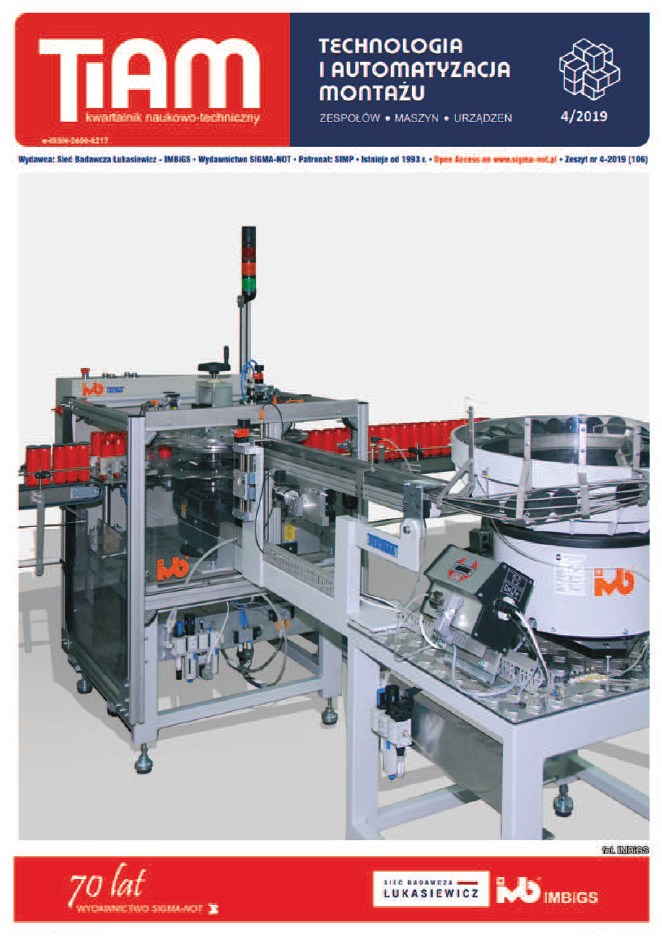Abstract
The research into the impact strength of adhesive joints has been carried out since the 1980s, however, so far no universal method has been developed so as to ensure obtaining useful results. The article presents the authors' own methodology of investigating the impact strength of adhesive joints, developed in Polish military universities. The methodology utilizes adhesive lap joint samples as an object of research. The device for conducting the experimental research was a pendulum hammer of the maximum energy equal to 25 J. The tests were conducted on samples, whose elements were made of an aluminium alloy, joined by means of two construction adhesives with significantly different properties (Young's modulus). The test samples were modelled on the samples exploited in the testing of static adhesive joints. As a result of the preliminary investigations, it was found that the proposed methodology can be used to determine the impact strength of adhesive connections. In addition, it was found that there is a clear relationship between adhesive connections and the stiffness of glue which makes the connection.
This is an Open Access article distributed under the terms of the Creative Commons Attribution License CC BY 4.0 (https://creativecommons.org/licenses/by/4.0/)
References
Adams R.D., J.A. Harris. 1996. "A critical assessment of the block impact test for measuring the impact strength of adhesive bonds". International Journal of Adhesion and Adhesives (16): 61-71.
Casas-Rodriguez J.P., lA Ashcroft, VV Silberschmidt. 2007. "Damage evolution in adhesive joints to impact fatigue". Journal of Sound and Vibration (308): 467- 478.
Goglio L., M. Rosetto. 2008. "Impact rupture of structural adhesive joints under different stress combinations". International Journal of Impact Engineering (35): 635-643.
Karachalios E.F., R.D. Adams, L.F.M. da Silva. 2013. "Single lap joints loaded in tension with ductile steel adherends" International Journal of Adhesion and Adhesives (43): 96-108.
Komorek A., P. Przybytek. 2015. "Initial research of impact strength in adhesive joints". Solid State Phenomena, Vol. 237: 160-165.
Komorek A. i in. 2018. "Wpływ wartości wsp6fczynnika sprężystości wzdłużnej kleju na udarność połączeń klejowych blokowych". Technologia i Automatyzacja Montażu (3): 53-58.
Machado J.J.M. et. al. 2018. "Numerical study of impact behaviour of mixed adhesive single lap joints for the automotive industry". International Journal of Adhesion and Adhesives (84): 92-100.
PN-ISO 9653 - Kleje. Metody badania wytrzymałości na ścinanie udarowe polaczeń klejowych 2000.
Sato C. 2005. "Impact behavior of adhesively bonded joints". in: Adhesive Bonding: Science, Technology and Applications, pod red. Adams R.D. WPL, Cambridge: 64-188.
Taylor A. 1996. "Impact Testing of Adhesive Joints". MTS Adhesive Project 2 AEA Technology, 5 (2).
Viana G. et. al. 2018. "Strain rate dependence of adhesive joints for the automotive industry at low and high temperatures". Journal of Adhesion Science and Technology 32:19,2162-2179.


